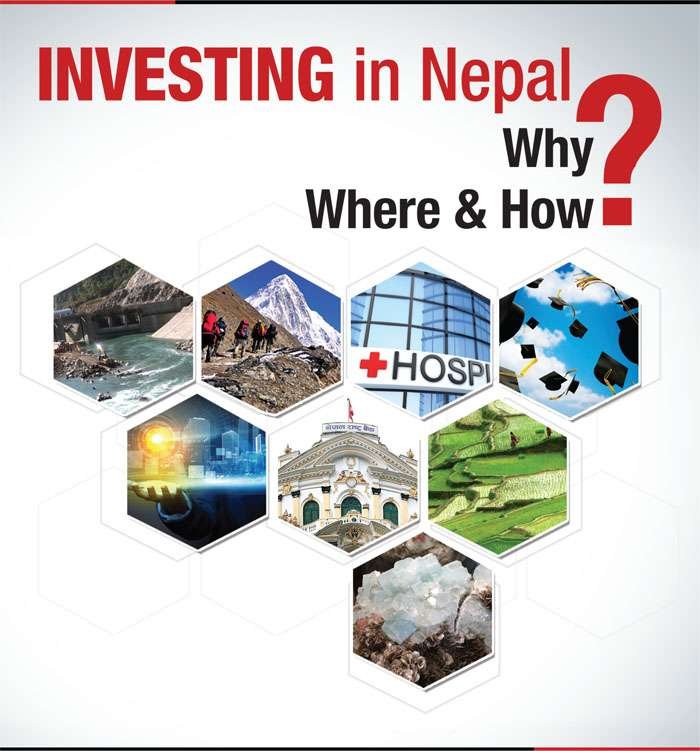
Nepal’s investment landscape reflects a complex tapestry of challenges and opportunities across various sectors. While there are signs of growth and potential, numerous obstacles hinder the country’s ability to attract and retain both domestic and foreign investment. In this article, we delve into the key challenges facing Nepal’s investment environment and propose solutions to foster a more conducive atmosphere for economic growth and prosperity.
Challenges Facing Nepal’s Investment Environment:
- Agricultural Sector Struggles:
- Lack of Success: Despite being a major sector with high human resource involvement, the agricultural industry witnesses a high rate of failure among ventures, leading to migration abroad.
- Subsidy Ineffectiveness: Government subsidies intended to support agricultural enterprises have failed to sustain businesses, with only 1% of recipients remaining in the sector.
- Market Competition and Price Disparity:
- Imported Goods Dominance: Nepali products face stiff competition from imports, primarily from India, due to price disparities and limited access to modern technology.
- Decreased Consumer Demand: Urban areas experience reduced economic activity, resulting in closures of businesses and decreased consumer demand, further exacerbating market challenges.
- Construction Sector Woes:
- Payment Delays: Construction businesses suffer due to delayed payments from government projects, leading to financial strain and closures.
- Legal Complexities: Legal disputes and challenges, particularly in projects involving international companies, deter investment and tarnish Nepal’s reputation.
- Tourism Sector Uncertainty:
- Manpower Shortage: Despite signs of improvement, the tourism sector faces a shortage of skilled workers, impacting operations and service quality.
- Entertainment Industry Struggles: The entertainment sector, particularly in urban areas, grapples with closures and operational dilemmas, affecting businesses and employment opportunities.
- Hydropower Transmission Challenges:
- Infrastructure Limitations: Challenges in connecting hydropower projects to transmission lines hinder electricity distribution and export potential, jeopardizing future energy agreements.
- Foreign Investment Deterrence:
- Scandals and Bureaucratic Hurdles: Recent controversies, such as the Ncell scandal, and bureaucratic inefficiencies deter foreign investors, undermining confidence in Nepal’s investment climate.
- Education and Healthcare Sector Crisis:
- Educational Decline: High schools and private colleges face closures due to declining student enrollments, highlighting the urgent need for educational reforms.
- Healthcare Strain: The healthcare sector experiences strain, with issues ranging from lack of resources to workforce shortages, necessitating urgent attention and investment.
- Information and Communication Sector Challenges:
- Declining Traditional Media: Traditional media outlets struggle due to declining advertising revenue, posing challenges for journalists and media employees.
- Skill Shortage: The shortage of skilled workers, coupled with bureaucratic obstacles, hampers industrial and construction activities, leading to reliance on foreign labor.
- Auto Import Dilemma:
- Shift in Vehicle Preferences: Diesel and petrol vehicle sales decline, while electric vehicle imports surge, reflecting changing consumer preferences and market dynamics.
- Real Estate Market Volatility:
- Property Price Fluctuations: Real estate markets witness volatility, particularly in urban areas, affecting investor confidence and market stability.
Solutions to Enhance Nepal’s Investment Environment:
- Streamlined Taxation Procedures:
- Simplify Tax Processes: Introduce streamlined taxation procedures to facilitate easy business registration, renewal, and updates, reducing bureaucratic hurdles for entrepreneurs.
- Infrastructure Investment:
- Improve Infrastructure: Invest in infrastructure development, particularly in sectors like transportation and energy, to enhance connectivity and support economic growth.
- Policy Reforms:
- Implement Policy Reforms: Enact policy reforms to address legal complexities and bureaucratic inefficiencies, ensuring a transparent and conducive business environment for investors.
- Workforce Development:
- Skill Development Initiatives: Implement skill development programs to address workforce shortages and equip Nepali workers with the necessary skills to meet industry demands.
- Transparency and Accountability:
- Promote Transparency: Foster transparency and accountability in governance and business practices to build trust among investors and create a level playing field for all stakeholders.
- Sector-Specific Incentives:
- Offer Incentives: Provide sector-specific incentives and support programs to encourage investment in key sectors like agriculture, tourism, and renewable energy.
- Public-Private Partnerships (PPPs):
- Foster PPPs: Encourage public-private partnerships to leverage resources and expertise from both sectors, facilitating infrastructure development and service delivery.
- Investor Engagement and Promotion:
- Enhance Investor Engagement: Actively engage with investors, both domestic and foreign, to understand their concerns and promote Nepal as an attractive investment destination.
Conclusion: Addressing the challenges facing Nepal’s investment environment requires concerted efforts from both the government and private sector stakeholders. By implementing targeted reforms, investing in infrastructure and human capital, and fostering a culture of transparency and accountability, Nepal can create a more conducive environment for investment, driving sustainable economic growth and development.
Also Read: